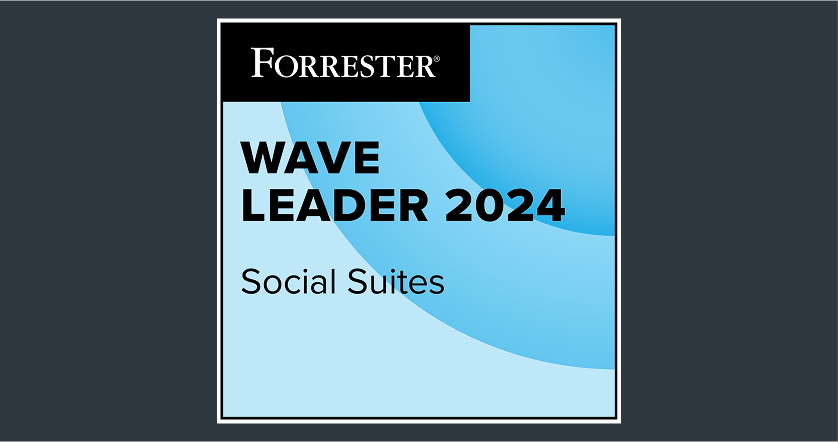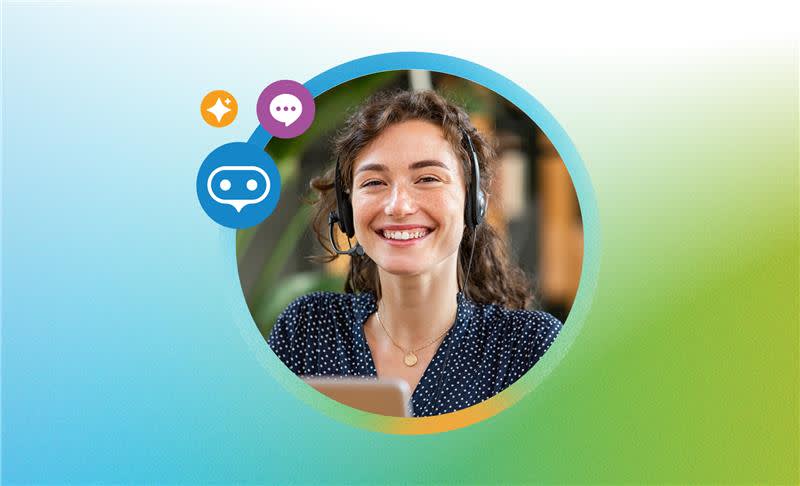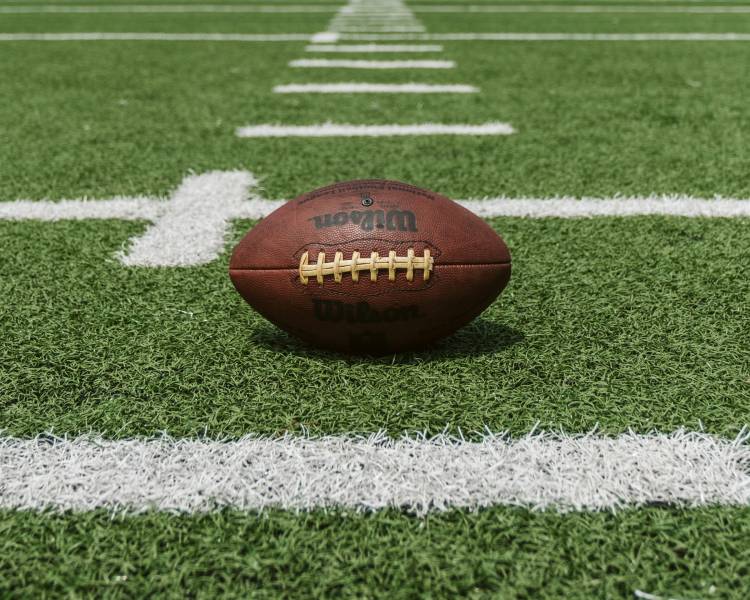What is customer intelligence?
Customer intelligence is gathering and analyzing customer data —past, existing and potential — to understand their needs, preferences and behaviors. This intelligence helps create targeted marketing strategies, improve customer experiences and drive business growth.
The primary sources of customer intelligence are customer interactions and transactions. This includes data collected from contact center CRM systems, e-commerce platforms, social media, customer surveys and other touchpoints where customers engage with your brand.
Here is how the key stakeholders ensure a consistent inflow of customer intelligence and its strategic use:
Head of CX and chief experience officers (CXOs): These leaders drive the overall strategy for customer experience and ensure that customer intelligence is integral to decision-making processes.
Head of customer service: They focus on capturing and utilizing customer feedback to improve customer service quality and operational efficiency.
Customer service managers: They oversee the day-to-day collection and analysis of customer data, ensuring that insights are actionable and aligned with the organization's goals.
Marketing teams: These teams use customer intelligence to create personalized advertising campaigns and improve customer engagement.
Data analysts and data scientists: These professionals interpret complex data sets and translate them into meaningful insights.
Why is customer intelligence data important?
Knowing your customers is key to business success. Here's how customer intelligence helps:
Deliver personalized experiences
Latest CX statistics, shows that 77% of consumers have chosen, recommended or paid more for a brand that provides personalized service or experiences. Customer intelligence data enables you to tailor interactions based on customers' interests, preferences and journey stages. By delivering relevant content and offers, you position your brand as genuinely attentive to their needs, fostering stronger customer relationships.
Meaningful engagement, higher conversion
Customer intelligence-backed outbound campaigns lead to higher engagement and conversions. Understanding your audience— their requirements, preferences and journey stages— increases the likelihood of converting prospects into customers. This targeted approach ensures that your efforts resonate effectively, driving measurable business outcomes.
Reduce customer churn
Analyzing customer intelligence, such as interaction frequency, support ticket trends and billing patterns, helps identify at-risk customers who may churn if neglected. Proactively addressing their concerns or offering tailored solutions can prevent customer churn. For subscription-based businesses, providing least-engaged customers with incentives like free trials or discounts on upgraded plans can boost customer retention and increase customer lifetime value.
Service improvement and innovation
Customer intelligence provides valuable insights into customer needs and preferences, guiding product strategy, innovation and development. For example, identifying recurring complaints about long wait times prompts the deployment of chatbots in contact center operations to reduce average hold times and enhance service efficiency. This proactive approach demonstrates a commitment to improving customer experiences through innovative solutions.
Competitive advantage
Customer intelligence gives you a competitive edge by informing you about customer sentiments and behaviors. You can promptly innovate, refine processes and develop strategic roadmaps that align with evolving customer expectations by monitoring key customer service metrics. This proactive stance enhances customer satisfaction and strengthens your position in the market.
Customer intelligence vs consumer insights
It's easy to confuse customer intelligence with consumer insights. However, both are different.
Aspect | Customer intelligence | Consumer insights |
Definition | The process of gathering and analyzing data about customers to understand their needs, preferences and behaviors | The interpretation of consumer data to understand underlying motivations, attitudes and behaviors |
Focus | Primarily on individual customers and their interactions with the brand | Broader focus on market trends and consumer behaviors across segments |
Data Sources | CRM systems, e-commerce platforms, social media interactions, customer feedback and surveys | Market research, focus groups, social listening, consumer surveys and trend analysis |
Type of Data | Transactional data, demographic information, purchase history and customer service interactions | Qualitative data, attitudinal data, psychographic information and broader market trends |
Purpose | To enhance customer experience, personalize interactions and optimize customer retention management | To understand market trends, develop marketing strategies and innovate products |
Analysis | Data-driven, focusing on specific customer behavior and preferences | Insight-driven, focusing on understanding why consumers behave in a certain way |
Application | Used for tailoring marketing efforts, improving customer service and building customer loyalty | Used for strategic decision-making, brand positioning and market segmentation |
Outcome | Improved customer satisfaction, higher engagement and reduced churn | Enhanced market understanding, better product-market fit and more effective marketing campaigns |
Types of customer intelligence data
Understanding different customer intelligence data types prepares you to leverage them effectively. These include:
Demographic data: It includes basic characteristics such as age, gender, income level, education, occupation and location. This type of data helps segment customers into distinct groups, enabling more targeted marketing campaigns.
Behavioral data: It captures how customers interact with your brand, including their purchase history, website activity, product usage and social media interactions. Analyzing this data lets you personalize marketing messages and offers based on past behaviors.
Transactional data: This data is related to customer transactions and purchase history. Examples include order details, payment methods, transaction frequency and average order value. This data is crucial for analyzing purchasing patterns and predicting future buying behavior.
Psychographic data: It includes information on hobbies, interests, opinions, attitudes and lifestyle choices. Psychographic data helps create more engaging and relevant content that resonates with customers’ values and interests.
Interaction data: It encompasses information about customer interactions occurring on contact center channels. This includes support tickets, call logs, chat transcripts and email communications. Such data enhances customer service by identifying common issues and improving response strategies.
Feedback data: This includes customer surveys, reviews, ratings and net promoter scores (NPS), which are directly derived from customers about their experiences and satisfaction levels. Feedback data provides actionable insights for improving products, services and overall customer experience.
Social media data: As the name suggests, data is collected from customers’ activities on social media platforms. Examples include likes, shares, comments, followers and social mentions. This data helps understand brand perception, monitor trends and engage with customers in real time.
Sentiment data: It analyzes customers’ sentiments and emotions towards your brand. This can be gathered from reviews, social media comments and customer feedback. Sentiment analysis data provides insights into customer satisfaction and brand perception, enabling you to address negative sentiments proactively.
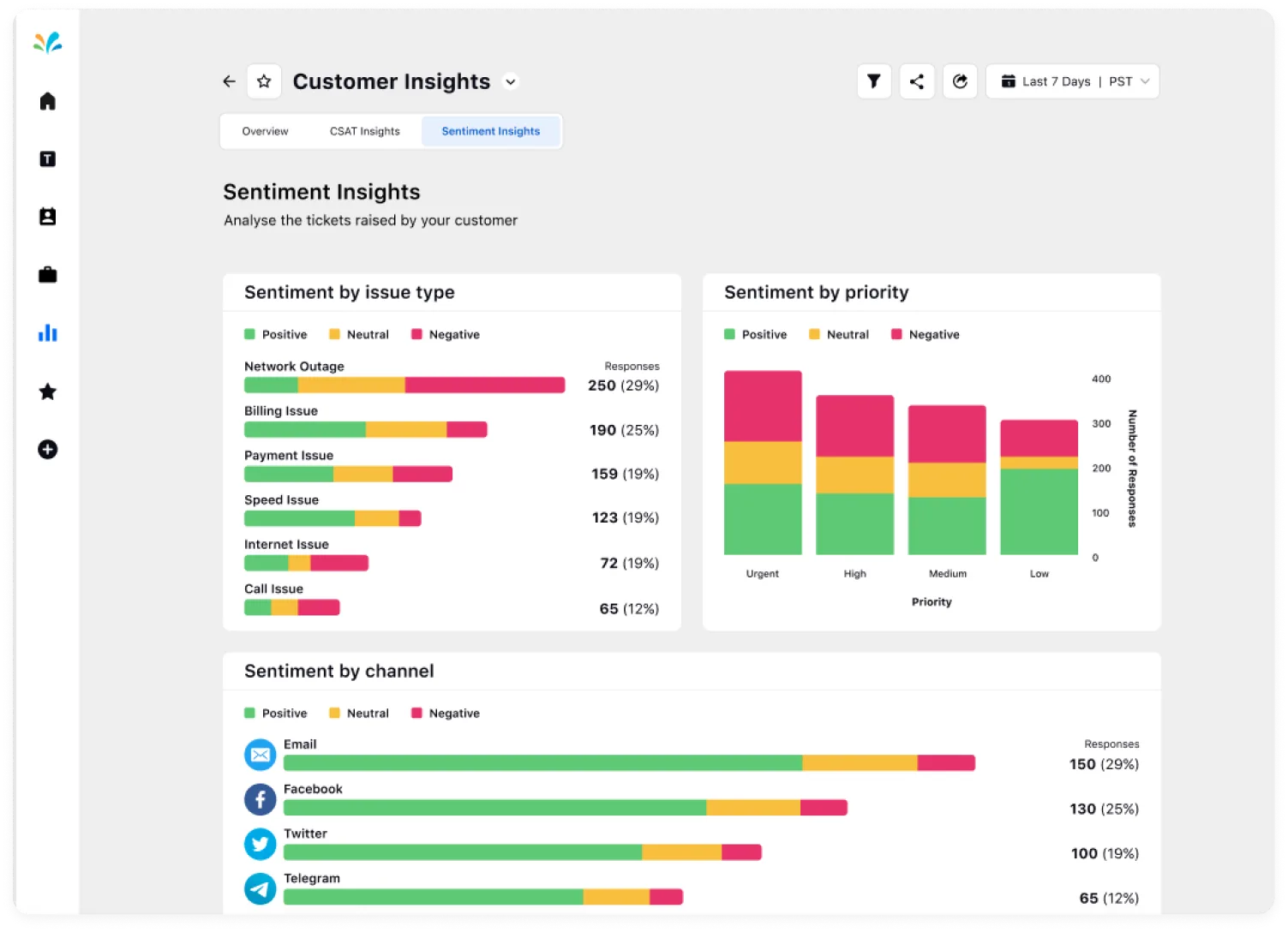
How to gather customer intelligence data [+ best practices]
Everything about customer intelligence may seem familiar. But it can leave you baffled with questions like, where to begin? What to consider? What can be pushed to the back burner for now? Get your answers from the section below.
1. Customer relationship management (CRM) systems
CRM systems are a primary source of customer intelligence data. They consolidate customer information from various customer touchpoints, providing a comprehensive view of customer interactions and history.
For example, an e-commerce store can use a CRM system to track purchases, customer preferences and interactions. The store can identify frequent buyers and their preferred product categories by analyzing this data, enabling targeted marketing campaigns and personalized recommendations.
💡 Pro Tip
Many CRM platforms offer standard fields for storing and tracking identity data, such as name, address, phone number and email. However, not all CRMs are equipped to handle all types of data such as descriptive, qualitative and quantitative that you may want to collect.
So, when choosing CRM software for your business, it’s crucial to evaluate which data fields come standard and which ones can be customized. Depending on your business needs, you might require a CRM with extensive customization capabilities.
Additionally, if you have narrowed down your options, encourage your employees to test the software and explore its knowledge bases. Compare the different plans available to ensure that the one within your budget includes all the essential features you need.
2. Customer surveys and feedback forms
Surveys and feedback forms directly collect customer opinions and satisfaction levels. They can be conducted through email, websites or in-app prompts. Since your competitors are also most likely to do so, here's how you can stay ahead of the curve.
📲 Leverage the power of multi-channel feedback:
Go beyond email: Integrate surveys seamlessly within your customer journey. Consider post-interaction surveys within your app or website after key touchpoints like a purchase or support ticket resolution.
Embrace in-the-moment feedback: Text message surveys with quick NPS ratings can capture real-time sentiment.
Social listening: Actively monitor brand mentions and customer conversations on social media platforms. Identify pain points, praise and emerging trends.
🔍 Unearth the "Why" behind the score:
Ask open-ended questions: Don't just ask if customers are satisfied; ask why they gave a specific rating. Use open-ended questions strategically to uncover deeper emotions and motivations.
Follow-up interviews: For particularly insightful responses, consider personalized follow-up interviews to delve deeper and gather richer qualitative data.
🤐 Tap into the untapped voice of the silent majority:
Passive feedback collection: Analyze website and app behavior using clickstream data and heatmaps. Identify areas of confusion or frustration through user interactions.
Sentiment analysis tools: Leverage AI-powered sentiment analysis to extract insights from customer service chats, emails and social media conversations.
📊 Go beyond satisfaction - Identify promoters and detractors:
Customer effort score (CES): Measure the ease of doing business with you. This identifies areas where reducing friction can significantly improve customer experience.
Net promoter score (NPS): Move beyond basic satisfaction surveys and implement NPS to identify promoters (loyal customers who recommend you) and detractors (unhappy customers who could churn).
Deep Dive: How to Improve the Net Promoter Score of Your Brand
Take the survey questionnaire to your chatbot
Modern omnichannel survey software not only converts your survey questions into chatbot conversations but also seamlessly integrates these conversational surveys on messaging channels. This versatile feature allows you to ask relevant questions and gather feedback, significantly boosting your survey response rate.
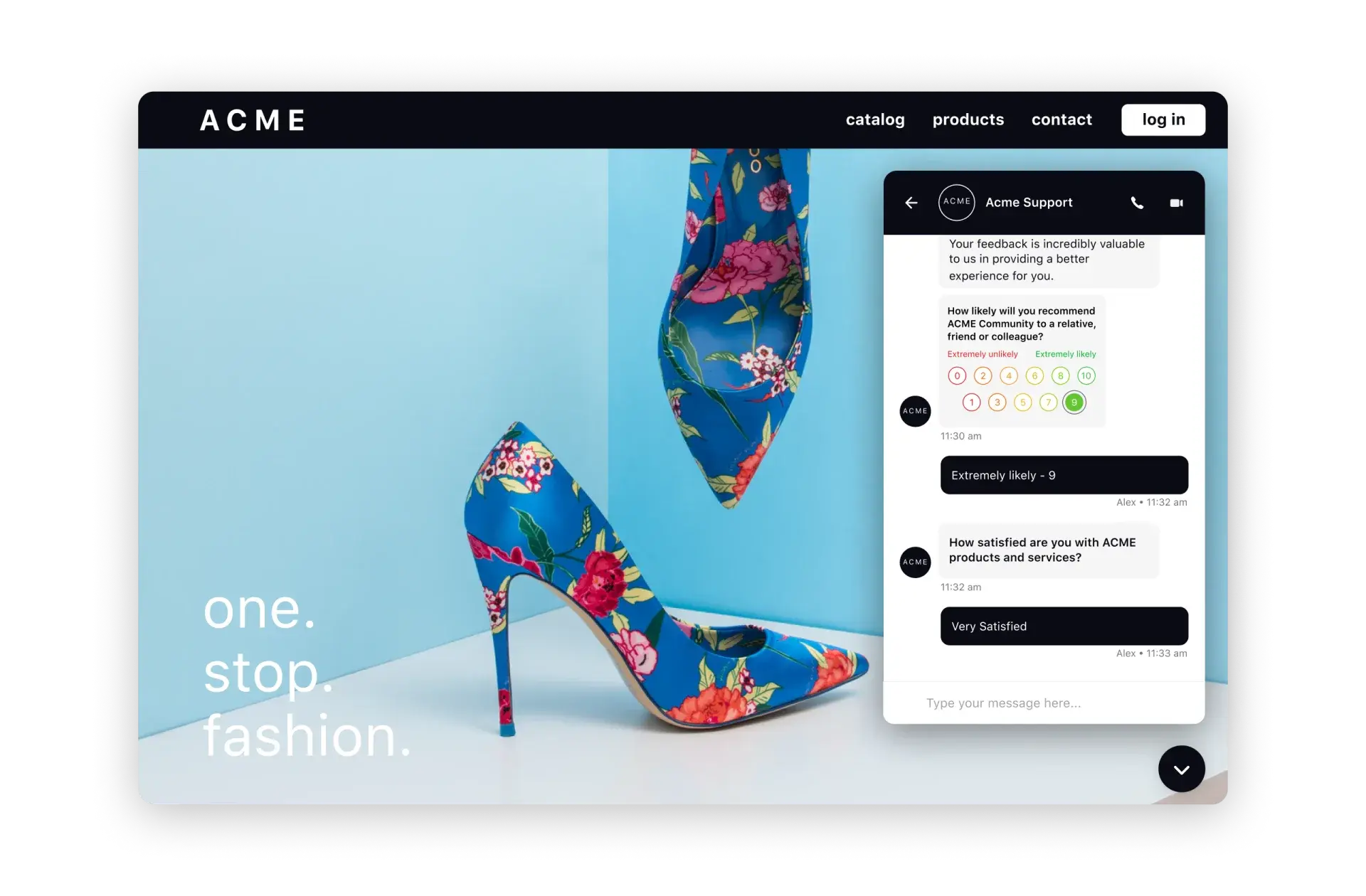
3. Social media monitoring
Social media platforms are valuable for understanding customer sentiments and behaviors. Social media monitoring platforms can track mentions, comments, and interactions related to your brand. Here's how you can take social listening beyond the surface.
🔭 Capturing the raw and real:
Authentic feedback: Unlike surveys, which can be influenced by social desirability bias (people wanting to respond positively), social media reveals customers' true feelings and opinions.
Real-time pulse on brand perception: Identify emerging trends, customer concerns and brand mentions as they happen. This allows for quicker response times and proactive issue resolution.
Uncovering brand advocates and critics: Discover your biggest fans and identify potential brand detractors before they churn.
🔦 Going beyond brand mentions:
Industry trends and competitor analysis: Listen to what people say about your industry and competitors. Identify opportunities to differentiate yourself and capitalize on emerging trends.
Customer journey insights: Track how customers interact with your brand across social touchpoints. This helps identify areas for improvement throughout the customer journey.

4. Website analytics
You can gain a deeper understanding of your online audience by leveraging website analytics. Here's how website analytics goes beyond vanity metrics:
⛳ Unveiling the customer journey:
Page flow analysis: Track how visitors navigate your website, identifying popular entries and exit points. This reveals areas of confusion or frustration and opportunities to optimize the user experience.
Heatmaps and session recordings: Visualize user clicks, scrolls and mouse movements to understand how visitors interact with your website elements. Identify areas of high engagement and potential drop-off points.
Form analytics: Analyze form abandonment rates and completion times to identify friction points in your contact forms or checkout processes.
Conversion funnel analysis: Analyze where users drop off during the conversion process to identify bottlenecks within your sales funnel. This allows you to optimize each step for smoother customer journeys.
📈 Digging deeper into content performance:
Content engagement metrics: Track customer engagement metrics like time spent on a page, scroll depth and click-through rates to understand which content resonates with your audience.
A/B testing: Test different variations of headlines, calls to action and website layouts to identify what drives conversions and user engagement.
Internal search analysis: Analyze what users are searching for on your website. This will reveal knowledge gaps and potential content needs to improve website searchability.
5. Transactional data
Transactional data gives you a deeper understanding of your most valuable asset — your customers. Take a look.
🎁 Analyzing product performance and customer preferences:
Product popularity and profitability: Identify top-selling products, analyze profit margins and uncover hidden trends within product categories. This informs data-driven product development and marketing strategies.
Product bundling and recommendation engines: Leverage purchase patterns to create targeted product bundles or personalize product recommendations. This improves customer experience and increases average order value.
Customer lifetime journey analysis: Track how customer preferences evolve. This allows you to tailor marketing messages and promotions based on their purchase history and changing needs.
🏄 Optimizing the customer journey:
Cart abandonment analysis: Analyze abandoned carts to identify reasons for purchase drop-off. This can reveal issues with checkout processes or pricing strategies, allowing for optimization to improve conversion rates.
RFM analysis (recency, frequency, monetary): Analyze customer behavior based on how recently they purchased, how often they bought and how much they spent. This helps personalize communication and promotions based on customer engagement levels.
Customer service optimization: Identify products or services with high return rates or customer complaints. This allows for targeted training for contact center agents and product improvements to address recurring issues.
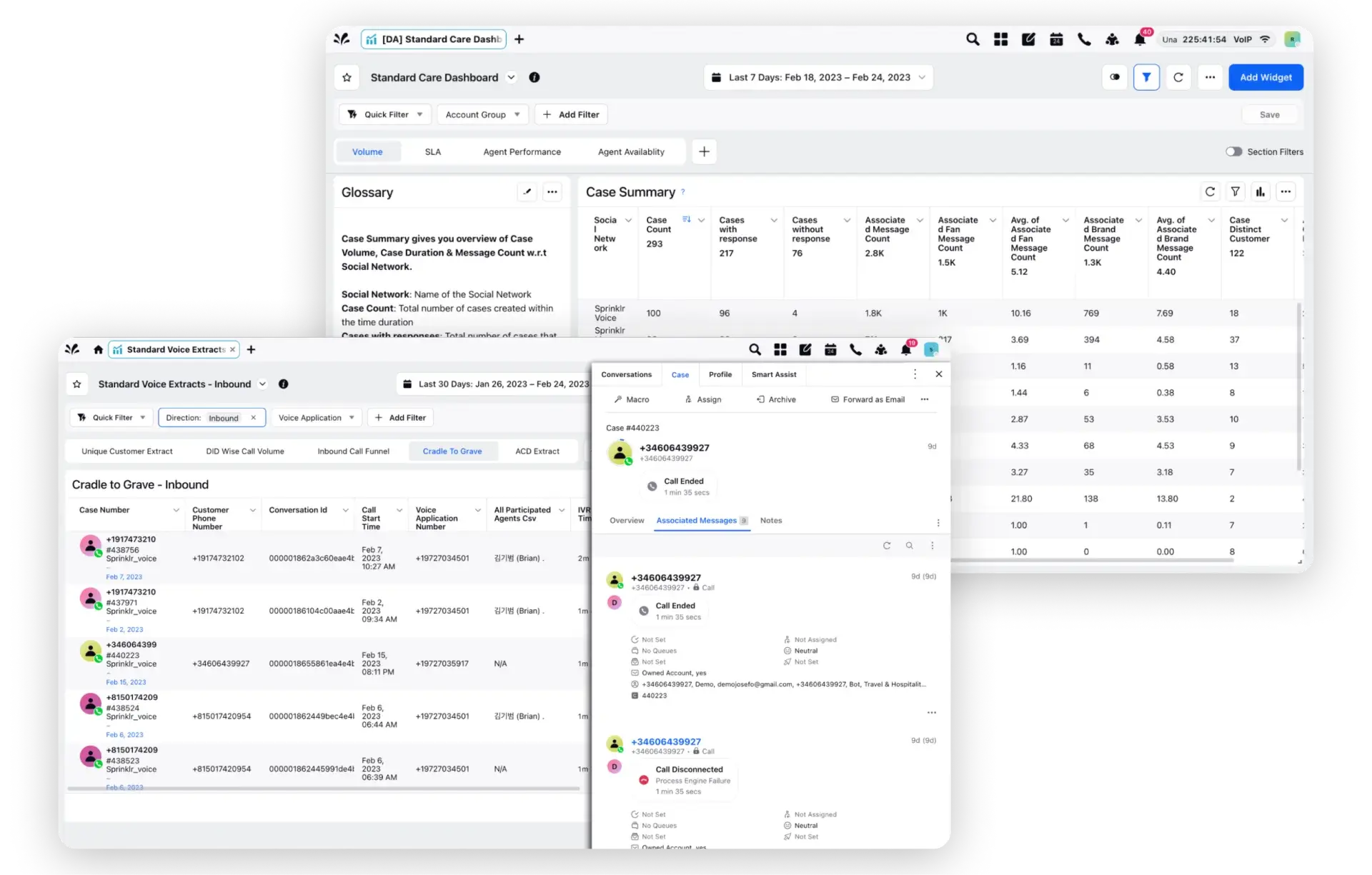
6. Customer support data
Customer support data offers a wealth of insights into the issues customers are facing and overall sentiment.
🔎 Identifying common customer issues and pain points:
Ticket categorization and trend analysis: Categorize support tickets by issue type to identify recurring problems and areas for product improvement. Analyze trends over time to understand if new issues are emerging.
Customer sentiment analysis: Utilize text analytics tools to gauge customer sentiment within support interactions. Identify frustrations and areas of confusion to prioritize solutions that directly address customer needs.
Root cause analysis: Don't just resolve tickets; identify and analyze the root cause of customer issues. Leverage customer interaction analytics to prevent similar problems from recurring and improve product or service design.

🤖 Optimizing the customer service experience:
Self-service knowledge base improvement: Analyze which customer support questions are most frequently asked. You can use this data to populate your knowledge base with relevant articles and FAQs to empower customers to self-serve and reduce reliance on support agents.
Agent training and coaching: Identify knowledge gaps or areas where customer service representatives struggle by analyzing ticket resolution times and customer feedback within support interactions. Tailor training programs to address these specific needs and improve overall agent effectiveness.
Identifying opportunities for omnichannel support: Analyze which customer service channels customers prefer (phone, email, live chat) and during which parts of the customer journey they typically reach out for support. This allows you to optimize your omnichannel customer service strategies for better accessibility and a seamless customer experience.
💰 Two cents from Sprinklr
While many businesses know how to capture customer information, the real challenge lies in managing it effectively. Centralizing all your customer data can streamline workflows and enable your team to work more efficiently.
Next is data governance. Having robust policies for ethically capturing and storing customer information is crucial. But is that enough?
Not quite. Clear SOPs must be followed meticulously. Implementation is where things often get tricky. Without standardized processes, employees may develop their own methods for handling data, leading to errors and inconsistencies.
The secret is to establish clear standards for collecting, storing and utilizing customer data across your organization. This approach minimizes confusion, enhances data accuracy and ensures compliance with ethical standards and regulations.
Things to consider when drafting your customer intelligence strategy
When building a customer intelligence strategy for your contact center, pay attention to this checklist:
✅ Data accuracy: Ensure all data collected is accurate and up to date. Inaccurate data can lead to misguided strategies and poor decision-making.
✅ Data integration: The process of integrating data from all channels (calls, emails and social media) into a unified view is a key part of data management. It’s particularly important as it simplifies the task of collating data for different stakeholders.
✅ Privacy compliance: It's of utmost importance to adhere to data privacy regulations. The potential consequences of non-compliance, such as legal issues, hefty fines and loss of customer trust, underscore the significance of this aspect of data management.
✅ Real-time analysis: Facilitate real-time data analysis. Delayed insights can hinder timely responses to customer needs and market changes.
✅ Actionable insights: Focus on deriving actionable insights from data. Merely collecting data without using it effectively wastes resources and hinders decision-making.
✅ Training and support: Ensure your team is well-trained to use customer intelligence tools. Insufficient training can result in underutilized resources and ineffective strategies.
✅ Feedback loop: Create a feedback loop for continuous improvement. Ignoring feedback can result in missed opportunities for customer value enhancement.
How to protect customer intelligence data
Did you know that in 2023, JD Sports suffered a financial data breach affecting 10 million customers? Inadequate cybersecurity measures led to financial penalties and lost customer trust. As business owners, you must remain vigilant and compliant with legal requirements such as:
General data protection regulation (GDPR): While EU-focused, GDPR sets global standards, mandating stringent data protection measures and imposing hefty fines for non-compliance.
California consumer privacy act (CCPA): CCPA provides California residents with rights over their personal information, including the right to know, delete and opt out of data sales, with fines up to $7,500 per violation.
Payment card industry data security standard (PCI DSS): This ensures that companies handling credit card information maintain a secure digital environment, with severe penalties for non-compliance.
💡 Good to know
Sprinklr provides high-level platform security, certified by CCPA, GDPR, ISO, PCI DSS and other leading security verification bodies. From governance to network security, Sprinklr ensures top data protection and is trusted by companies like Microsoft, Uber, Acer, McDonald's and others.
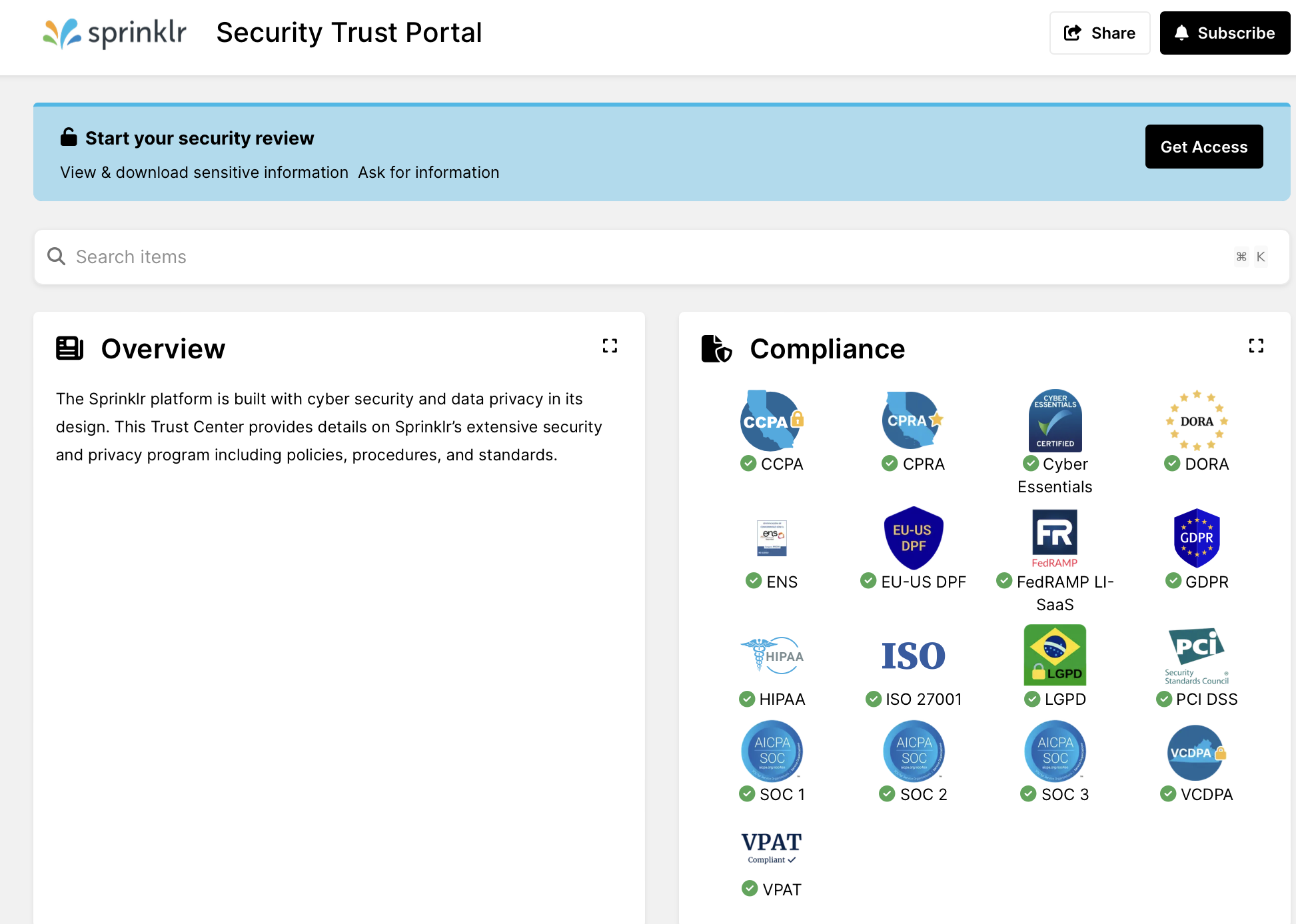
Customer intelligence dashboard examples
When discussing customer intelligence tools, they come with built-in dashboards reflecting relevant data. Let’s look at them.
Conversational analytics dashboard
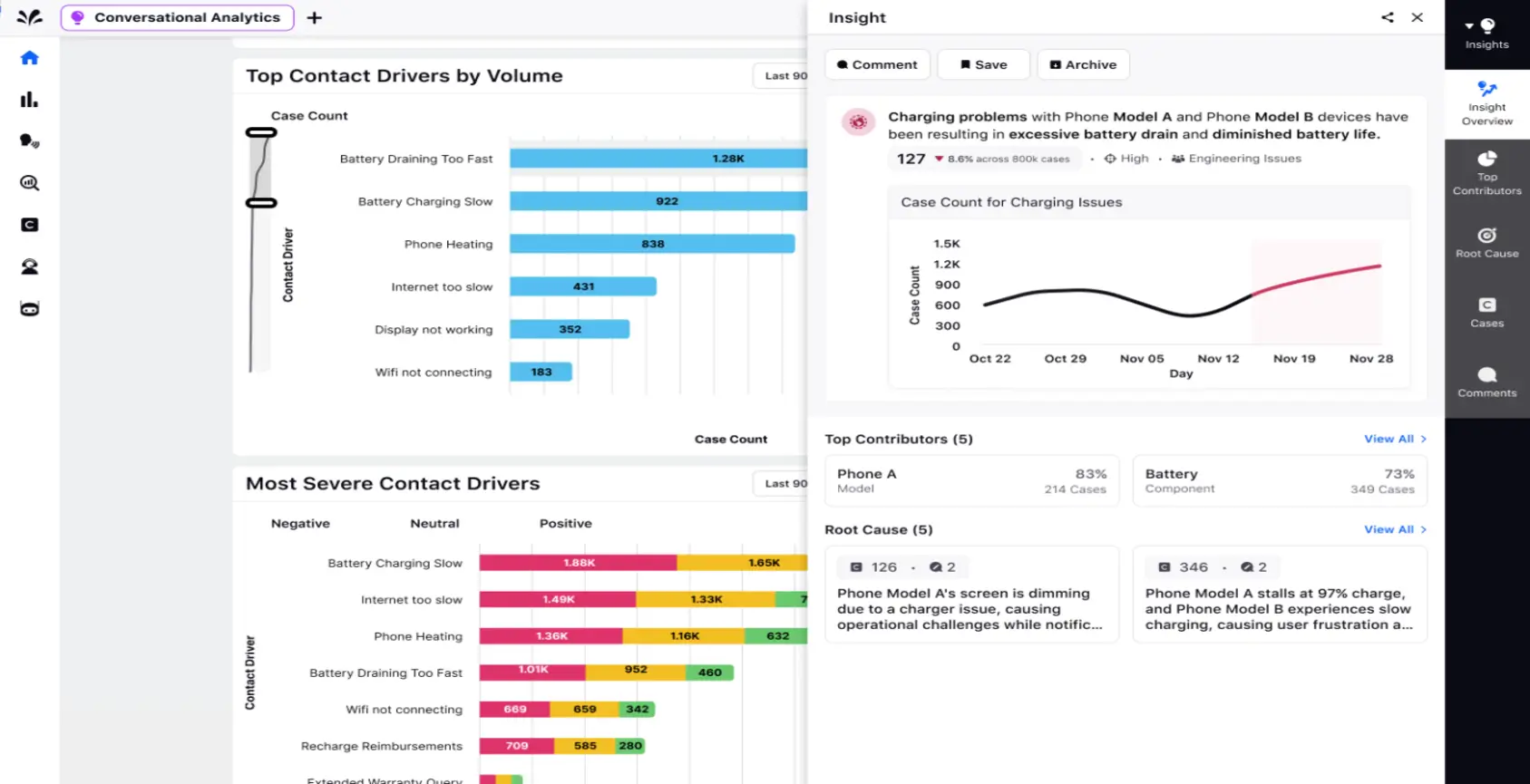
Imagine having the power to understand every facet of your customer interactions. With Sprinklr’s conversational analytics dashboard, you get persona-specific insights tailored to your needs. This allows you to track key metrics consistently and collaborate seamlessly with your global teams.
Effortlessly pinpoint root causes, detect anomalies and identify trends and top impact factors on critical contact center metrics. Dive deep into each contact driver, unraveling the attributes and reasons behind them and detailed descriptions of their root causes. Plus, you receive actionable recommendations, empowering you to take the best action every time. Learn more about Sprinklr conversational analytics software.
2. Real-time reporting and analytics
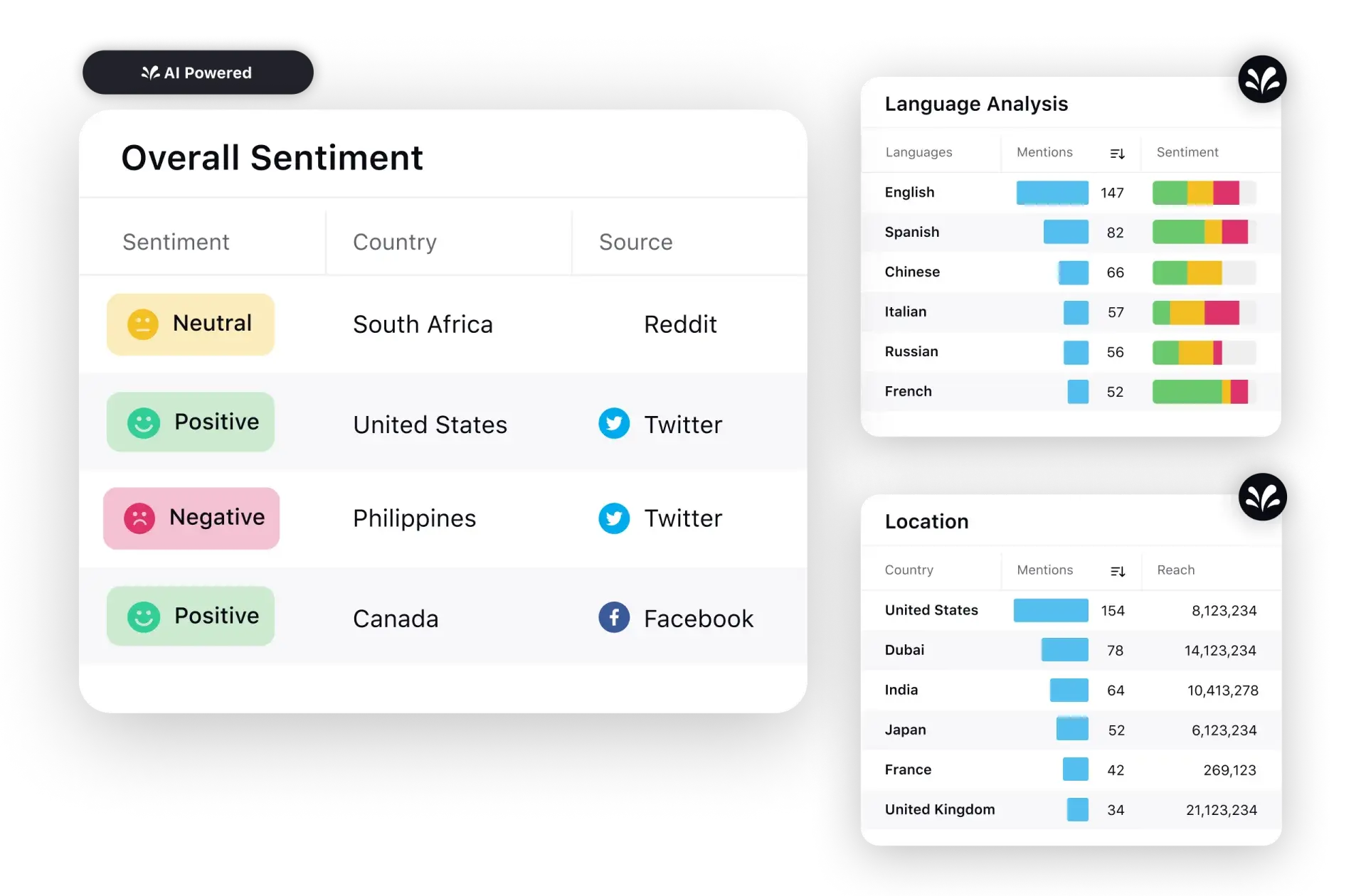
Here is how this works:
Sprinklr AI is proactive in analyzing the sentiment in your customer conversations. This means you receive instant alerts for critical moments, empowering you to intervene and manage potential escalations before they occur. This proactive approach helps you better understand your customers' emotions and intentions while keeping a vigilant eye on your CSAT scores in real time. Learn more about Sprinklr reporting and analytics software.
Many organizations struggle to make sense of the vast amounts of customer data they collect. Disparate data sources, fragmented insights and the inability to personalize customer interactions can significantly hinder growth and customer satisfaction.
This is where customer intelligence becomes indispensable and Sprinklr Service stands out as a powerful ally for data-first companies. By unifying millions of data points into a single, unified view, Sprinklr Service makes it easy for you to consume and interpret customer data, providing a comprehensive understanding of the customer journey.
Moreover, Sprinklr allows for easy customization of customer intelligence, ensuring that relevant stakeholders—from CXOs to customer service managers—have access to the insights they need. This tailored approach means that everyone in your organization can act on the most relevant data, improving efficiency and effectiveness.
To learn more about Sprinklr Service, schedule a demo with our experts today!
Frequently Asked Questions
Customer intelligence focuses on analyzing various data points to gain insights into customer behaviors and preferences, aiding strategic decisions. CRM (Customer Relationship Management) systems, on the other hand, are tools used to manage and store customer information, interactions, and relationships. CRM is a source of data for customer intelligence, which interprets and applies these insights.
Thank you for contacting us.
A Sprinklr representative will be in touch with you shortly.
Contact us today, and we'll create a customized proposal that addresses your unique business needs.
Request a Demo
Welcome Back,
No need to fill out any forms — you're all set.
